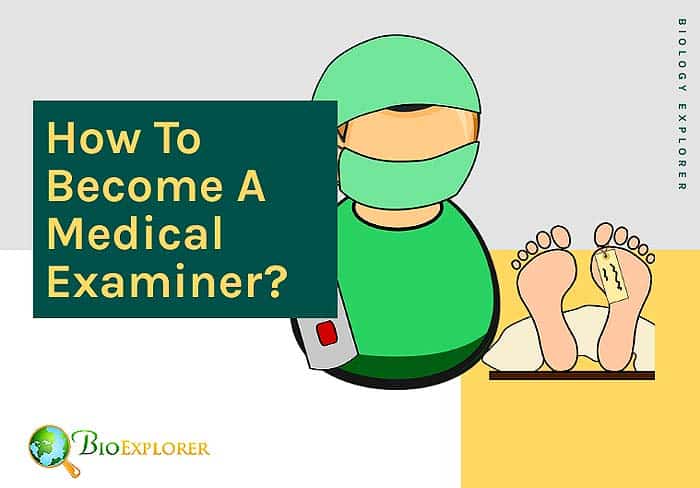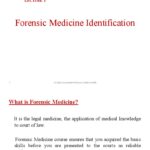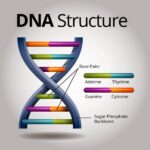The pursuit of becoming a medical examiner is a calling that blends the rigors of scientific inquiry with the solemn responsibility of uncovering the truth behind unexplained deaths. It’s a vocation that demands not only extensive medical knowledge but also an unwavering commitment to justice and a capacity for profound empathy. Are you intrigued? Let’s delve into the intricate path one must traverse to earn the title of medical examiner.
I. Foundational Footings: Education and Pre-Medical Acumen
The journey invariably commences with a robust undergraduate education. Prospective medical examiners should strategically focus on pre-medical coursework. Biology, chemistry (both organic and inorganic), physics, and mathematics form the bedrock of future medical understanding. A Bachelor’s degree is the ante to enter the hallowed halls of medical school. Aspiring medical examiners might contemplate a major in a science discipline. This could offer a competitive advantage. Moreover, shadowing physicians or volunteering in healthcare settings during this period is invaluable. This experience provides firsthand exposure to the medical milieu and solidifies one’s commitment to a career in medicine.
II. The Crucible of Medical School: Forging Clinical Competence
Following the successful completion of undergraduate studies and a commendable performance on the Medical College Admission Test (MCAT), admission to medical school marks a pivotal transition. The subsequent four years are a whirlwind of intensive learning. This comprises classroom lectures, laboratory work, and clinical rotations. These rotations expose students to diverse medical specialties, including internal medicine, surgery, pediatrics, and, crucially, pathology. A nascent interest in forensic pathology often germinates during these early exposures. The curriculum’s rigor serves to forge the essential clinical competence required for any physician, particularly one who may later specialize in the intricacies of death investigation.
III. Residency in Pathology: Honing Diagnostic Prowess
After obtaining a medical degree (MD or DO), the path to becoming a medical examiner necessitates a residency in pathology. This is typically a four-year program. This immersive experience provides comprehensive training in the examination of tissues and fluids. This is essential for diagnosing disease and understanding its progression. Pathology residencies encompass both anatomical pathology (examining organs and tissues) and clinical pathology (analyzing blood and other bodily fluids). During this phase, residents acquire the skills necessary to perform autopsies. This is a core function of a medical examiner. Furthermore, they learn to interpret microscopic findings. This skill is indispensable for elucidating the cause and manner of death.
IV. Fellowship in Forensic Pathology: Specializing in Death Investigation
The capstone of the training process is a fellowship in forensic pathology. This is a highly specialized program. This typically lasts one to two years. It provides focused training in the medicolegal investigation of death. Fellows work under the tutelage of experienced forensic pathologists. Here they hone their skills in performing medicolegal autopsies, investigating crime scenes, and testifying in court as expert witnesses. The fellowship curriculum delves into the intricacies of gunshot wounds, blunt force trauma, asphyxiation, toxicology, and other causes of unnatural death. Emphasis is placed on the meticulous documentation of findings, the proper collection of evidence, and the accurate interpretation of laboratory results. Completion of a forensic pathology fellowship is a prerequisite for board certification.
V. Board Certification: Validating Expertise
Upon completing a forensic pathology fellowship, aspiring medical examiners must pass a rigorous examination administered by the American Board of Pathology (ABP). Successful completion of this examination confers board certification in forensic pathology. This certification signifies that the pathologist has met the stringent standards of knowledge, skill, and competence required to practice forensic pathology independently. Board certification is often a mandatory requirement for employment as a medical examiner.
VI. The Professional Landscape: Navigating Career Trajectories
Certified forensic pathologists can pursue diverse career paths. Many find employment in medical examiner’s offices or coroner’s offices at the local, county, or state level. These positions involve performing autopsies, investigating deaths, and providing expert testimony in court. Others may opt for academic careers, teaching and conducting research at universities and medical schools. Some forensic pathologists work as consultants, providing their expertise to law enforcement agencies, attorneys, and insurance companies. The specific responsibilities and duties of a medical examiner can vary depending on the jurisdiction and the size of the office. However, the core mission remains the same: to determine the cause and manner of death in a thorough, objective, and scientifically sound manner.
VII. Essential Skills and Attributes: Beyond Medical Acumen
While medical knowledge and technical skills are paramount, success as a medical examiner also hinges on a constellation of other critical attributes. Excellent communication skills are essential for interacting with grieving families, law enforcement officers, attorneys, and other stakeholders. The ability to articulate complex medical findings in a clear and concise manner is crucial for effective testimony in court. Strong critical thinking skills are needed to analyze complex cases, identify inconsistencies, and arrive at sound conclusions. Impartiality, objectivity, and ethical conduct are indispensable qualities for maintaining the integrity of the medicolegal investigation. Finally, a capacity for empathy and compassion is essential for providing support to grieving families during a time of profound loss.
VIII. The Unseen Burdens: Psychological Fortitude
The role of a medical examiner is not without its inherent challenges. Exposure to death and suffering on a regular basis can take a toll on one’s emotional well-being. Medical examiners must develop coping mechanisms for managing stress and preventing burnout. Maintaining a healthy work-life balance is crucial for preserving mental and emotional health. Access to peer support and counseling services can be invaluable for navigating the psychological challenges of the profession. The ability to compartmentalize and maintain professional detachment is essential for performing duties objectively and effectively. Despite the inherent challenges, the profound satisfaction of providing answers to grieving families and contributing to the pursuit of justice can make the role of a medical examiner a deeply rewarding one.
IX. The Future of Forensic Pathology: Embracing Innovation
The field of forensic pathology is constantly evolving. This is driven by advances in technology and scientific understanding. New techniques in DNA analysis, toxicology, and imaging are providing increasingly detailed insights into the causes and circumstances of death. The integration of artificial intelligence and machine learning is poised to revolutionize the way autopsies are performed and data is analyzed. As technology continues to advance, medical examiners will need to adapt and embrace new tools and techniques to maintain their expertise and enhance the accuracy and efficiency of their investigations. A commitment to lifelong learning and continuous professional development is essential for staying at the forefront of this dynamic field. The future of forensic pathology is bright. It promises to yield even more accurate and insightful investigations into the mysteries of death.










Leave a Comment